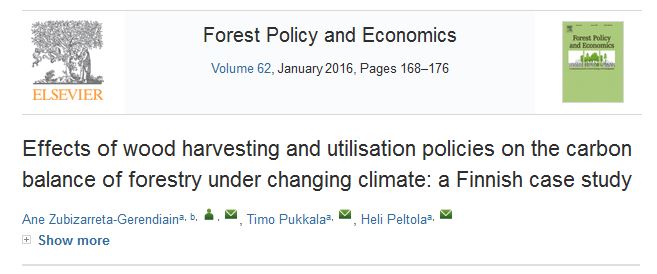Effects of wood harvesting and utilisation policies on the carbon balance of forestry under changing climate: a Finnish case study


Zubizarreta-Gerendiain, A., Pukkala, T., Peltola, H. 2016. Effects of wood harvesting and utilisation policies on the carbon balance of forestry under changing climate: a Finnish case study. Forest Policy and Economics. 62. 168-176
Summary
We studied the effects of different wood harvesting and utilisation policies on the carbon balance and economic profitability of forestry under the current and changing climate (A1B climate scenario). Sixty-year carbon balance was calculated for two Finnish boreal case study areas, one dominated by Scots pine and the other by Norway spruce. Carbon balance included changes in the carbon pools of living forest biomass (above- and below-ground), dead organic matter and wood products, as well as carbon releases from harvesting, transporting and manufacturing. Substitution effects of using biofuel instead of fossil-fuels were also taken into account. Business-as-usual (baseline) management policy (even-aged forestry: thinning from below, harvesting timber for wood-based products from thinning and final felling) and five other management policies were applied by changing the timing and type of thinning and the utilisation of harvested trees. Net present value (NPV, 2%) and carbon balance were maximised with even-flow net income constraints. In both case study areas, postponing the thinning of young stands and using thinning from above improved carbon balance and NPV. The use of pulpwood, logging residues and stumps as biofuel also increased carbon balance. Climate warming improved carbon balance and NPV when harvests were not increased from those under the current climate.
